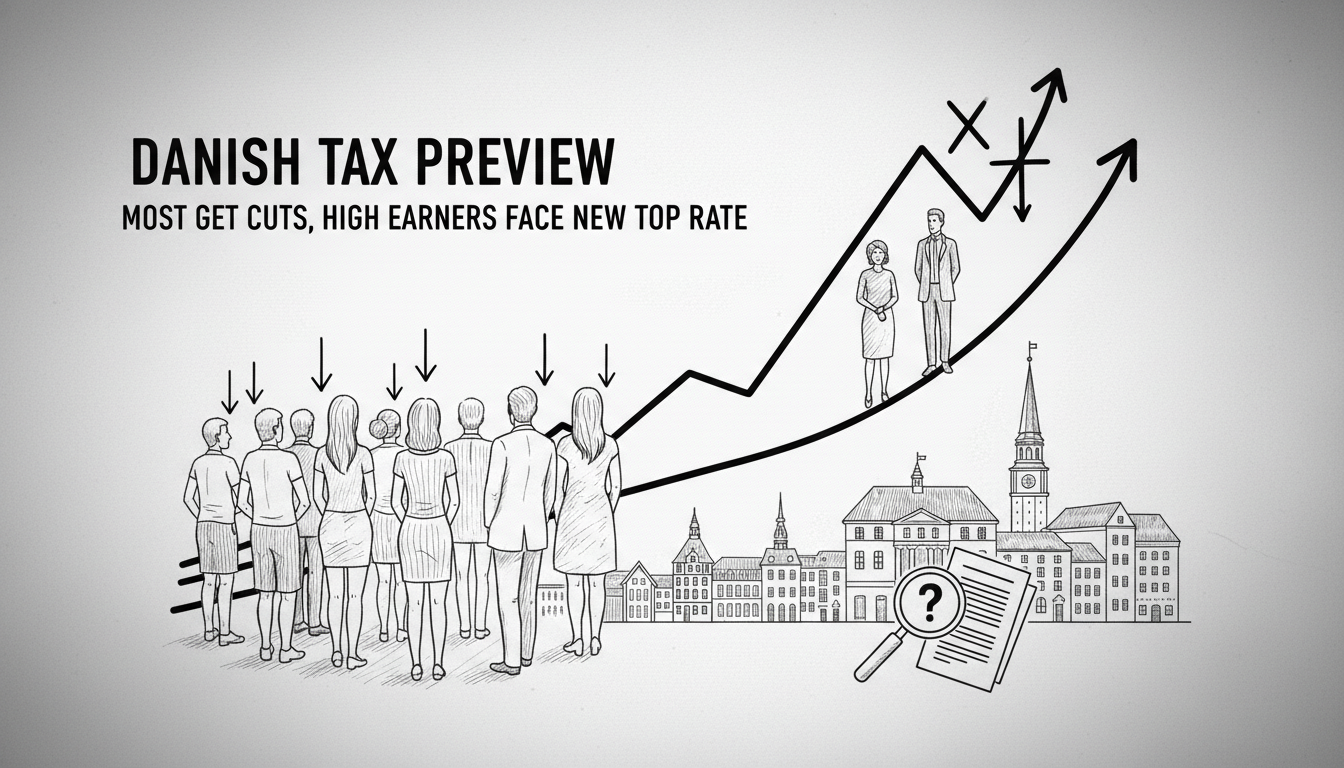Danish taxpayers can access their preliminary tax assessments starting Tuesday, revealing a complex picture of tax changes for the coming year. Most households will see reductions, while the highest earners face a new top-tier tax rate that could erase benefits for some.
The changes stem from a major restructuring of Denmark's progressive tax system. The government is converting two tax brackets into four, creating more gradual steps between income levels. This overhaul means the system becomes more complicated but delivers savings to approximately 85% of taxpayers.
Jeanette Kølbek, a personal finance economist, explained the shift. 'They're taking two tax steps and converting them to four steps next year. The tax system becomes more complex as a result. But most people can look forward to paying less tax,' she said.
Middle-income earners making between approximately 697,000 and 845,000 Danish kroner annually will see significant relief. These taxpayers currently pay top tax rates but will shift to a new middle tax category next year with lower rates.
'If you earn over about 697,000 kroner per year, you start benefiting from the tax cuts,' Kølbek noted. 'You pay top tax today but will pay a lower tax on income up to the new top tax threshold of 845,000 kroner next year, creating substantial savings.'
The employment deduction increase drives much of the tax relief. This deduction applies to all working Danes and represents a percentage of earned income up to certain limits.
However, households earning above approximately 2.8 million kroner annually will face a new 'top-top' tax rate. This highest bracket will gradually erode tax cut benefits for high earners, and those making over 3.2 million kroner may see net tax increases.
'For the highest paid, tax increases await instead of tax cuts,' Kølbek explained about the new top bracket's impact.
Young workers under 18 will be exempt from labor market contributions next year, saving them eight percent of their income. The exemption applies through December 31 of the year they turn 17.
Authorities also plan increased deductions for citizens within five years of retirement age, though this legislation remains pending.
Tax officials emphasize that taxpayers should critically review their preliminary assessments rather than accepting default figures. The calculations project forward from current tax data and may not reflect life changes.
'It's important to critically evaluate the information in the preliminary tax assessment,' Kølbek advised. 'The numbers come from your current tax return and preliminary assessment, which tax authorities project forward to next year.'
Many Danes traditionally overestimated their expected income to receive tax refunds, but this strategy now carries risks, especially for those earning under 496,470 kroner. The employment deduction calculation means overestimating income can create unexpected tax debt.
Travel deduction remains Denmark's most used tax benefit, available to all workers with commutes exceeding 12 kilometers each way. The deduction applies regardless of transportation method, and students in remote areas can now claim travel expenses.
Taxpayers should adjust deductions for remote work days and verify interest expense estimates, particularly if they've refinanced debt. Authorities don't automatically receive updated interest payment information.
For those seeking to avoid year-end tax bills, experts suggest alternative strategies. 'If you want to try to avoid tax debt, you can set deductions like travel expenses too low,' Kølbek recommended. She personally reduces her travel deduction by 10,000 kroner to accommodate occasional remote work without constant adjustments.
Workers can also request higher withholding percentages from employers to spread tax payments more evenly throughout the year.
These tax changes reflect Denmark's ongoing balancing act between progressive taxation and economic incentives. The system aims to support middle-income families while ensuring high earners contribute proportionally, though the increased complexity may challenge some taxpayers navigating the new brackets.

